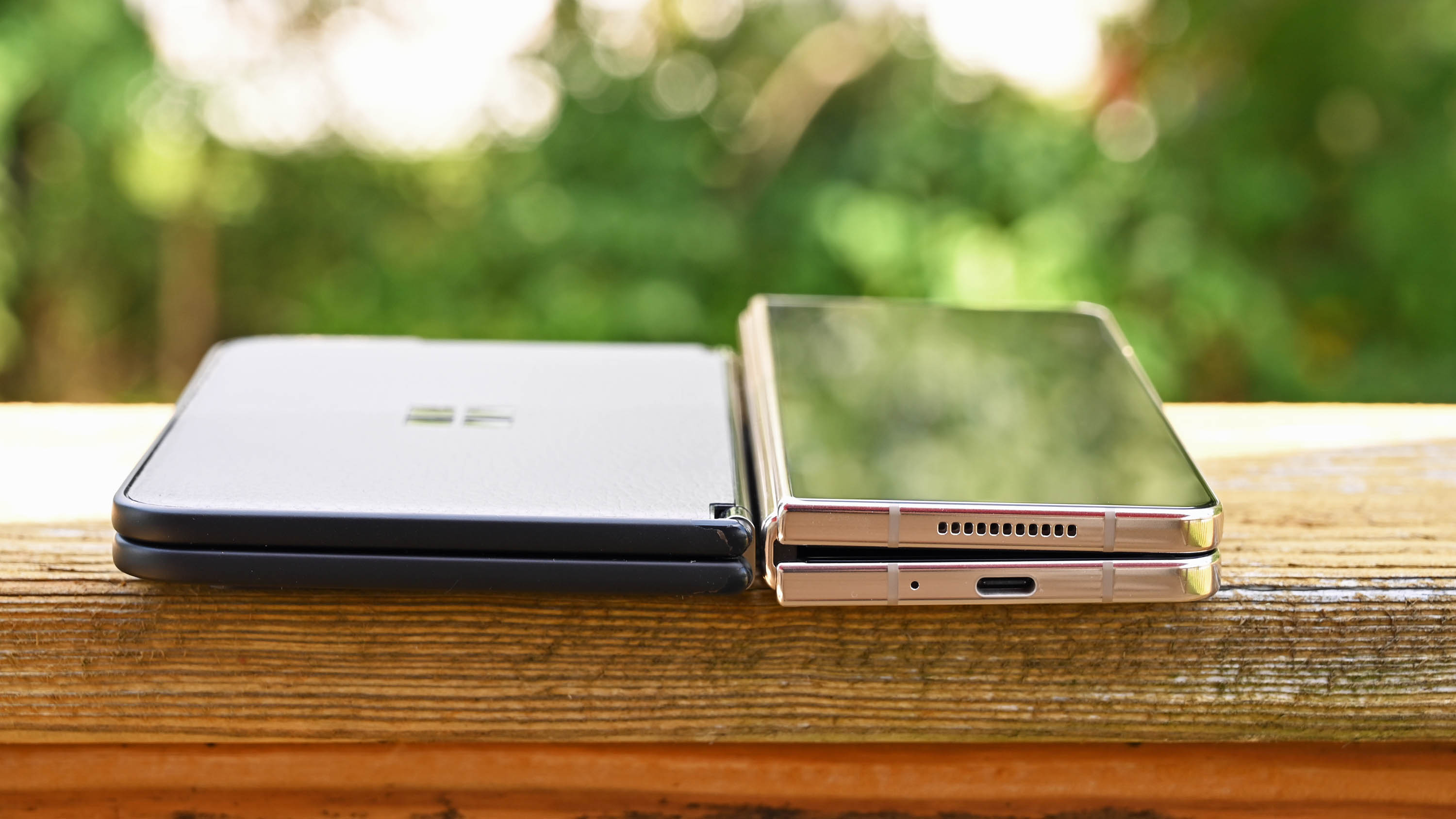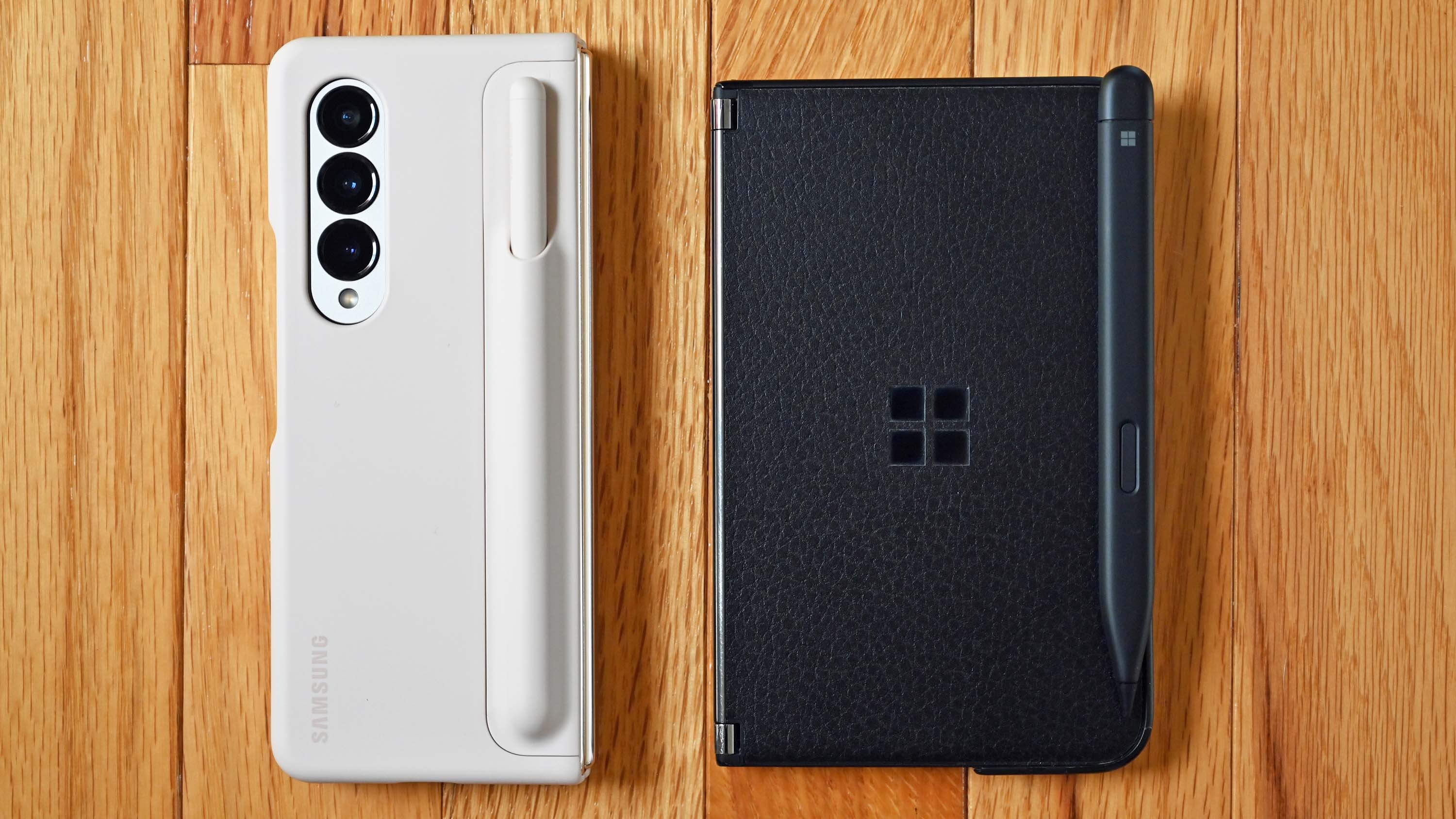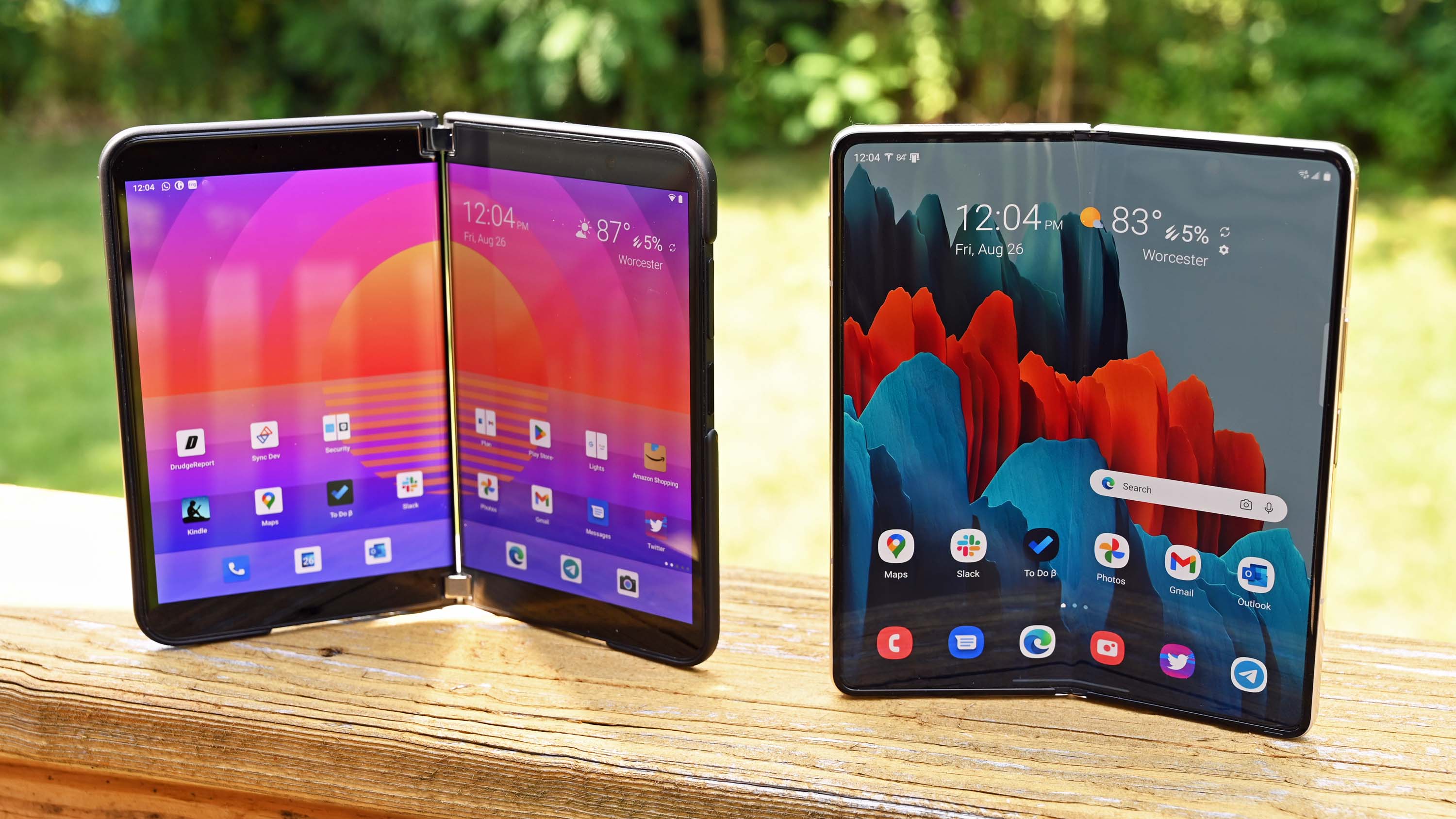Surface Duo 2 is just a better device than Samsung’s Galaxy Z Fold 4 (for me)
Samsung's foldable tablet is a stunning device, but it can't replace my Surface Duo 2. Here's why.

Let’s get something straight: This isn’t going to be a hit piece on Samsung’s expensive but impressive Galaxy Z Fold 4. I think it’s a great tablet that folds to reveal a narrow but usable external display for quick tasks. It’s fast, it has great cameras, and the 7.6-inch display is magnificent.
It’s also not for me.
After eight days of using the Galaxy Z Fold 4 as my primary phone, I finally gave up, moved my SIM back to Microsoft’s Surface Duo 2, and sent the Z Fold 4 back to Samsung. It’s not because I feel obligated to use Surface Duo 2 or even write this article (actually, switching to Fold 4 and ditching Duo would be more spicy and newsworthy).
I simply just like Surface Duo 2 more.
I already laid out my main gripes with the Z Fold 4, along with numerous things I loved about it. But fundamentally, Fold 4 and Surface Duo 2 are radically different experiences. I understand the urge to compare them, but they’re just not the same.
The Goldilocks problem
One meta issue that bothered me with Fold 4 was always choosing which display to use.
Do you want the small outer display or the big, glorious internal one?
All the latest news, reviews, and guides for Windows and Xbox diehards.
With Surface Duo 2, there is no choice. You open it and have two displays, and the experience is always consistent.
And the Fold 4 display choice is weird. You either get a narrow, cramped, somewhat compromised cover screen or a massive 7.6-inch tablet where the app is enormous. It’s like the story of Goldilocks, where I wanted something more in the middle.
Usability and speed
Here’s one I didn’t see coming: I’m faster with Surface Duo 2 than Galaxy Z Fold 4. By this, I mean opening the device, checking a notification, and doing quick work like responding to an email, sending a photo, or responding in Slack.
Running apps side by side also helps triage incoming data where multitasking becomes king. I can do more, faster on Surface Duo 2.
Part of it is related to choice, as noted above, being a problem. On Fold 4, you get a notification, turn on the cover display, see it, and now if you want to respond to it, you must either use the cramped outer screen or open the phone for tablet mode. That constant back-and-forth experience causes a split second of hesitation.
At this point, I wonder why not just have a regular phone but with a better, bigger screen like a Samsung Galaxy S22 Ultra.
And while you can multitask on Fold 4 by splitting the screen, it's a somewhat cumbersome experience that slows me down.
As noted previously, I find it clumsier to open and hold Fold 4 than Surface Duo 2. This complaint seems trivial and maybe even dumb, but I consider it a usability issue. I’d often feel forced to use the cover screen for basic tasks, including responding to messages, because I don't like opening Fold 4.
Many people will rightly argue that you use the Fold 4’s cover screen for the basics, and when you sit down or have some time, you can pop into tablet mode for a more immersive experience. And I get that — it’s just not something I had to pick between when using Surface Duo 2. I opened it, did my tasks, and closed it with less effort. There was no compromise, as I always had two appropriately sized displays to accomplish my goals.
I also love opening Surface Duo 2 and even reverse folding it — Microsoft’s hinge work here is astonishingly perfect.
Another complaint is how tall the Fold 4’s displays are: I’m doing a lot of reaching to the top for interactions and low for typing or menus. Surface Duo 2’s two displays are much shorter, especially with those large (but functional) bezels.
Ergonomically, I found touch navigation better on Microsoft’s design because Surface Duo 2 is not a tablet. That seems obvious when written, but I'm not sure it is something people comprehend when comparing these two devices.
Thinness > Weight
Surface Duo 2 is 21 grams heavier than the Z Fold 4, but you’d never know it holding both in your hands. Microsoft leaned in the right direction by making Surface Duo 2 (especially Surface Duo) absurdly thin as it hides its weight.
Due to its density, I never became accustomed to carrying the Fold 4 in my pocket, and putting a case on it made it worse. When I removed the Samsung Silicone Grip cover, I had second thoughts about returning Fold 4 as it feels better without any case. I think those who go caseless will enjoy the Fold 4 more, so long as they can keep anxiety at bay with potential damage.
Because of how wide Surface Duo 2 is, it never bothers me in my pocket by comparison.
Oh, pen, where art thou?
Samsung is far ahead of Microsoft regarding pen interactions on Fold 4. Not only does the S Pen feel good with negligible latency, but there are many more apps and uses for that pen, thanks to Samsung’s clever software add-ons.
The issue is how to carry that pen; a problem Surface Duo had that Surface Duo 2 mostly solved. With Samsung, you can get the S Pen case, which was “free” with my purchase to add a silo to the back. It works and even adds a bit more grip to the Fold 4 — it also made the Fold 4 even more massive to carry. The tradeoff wasn’t worth it as I rarely use the pen, but I like having one.
Slim Pen 2 on Surface Duo 2 is flat and magnetically sticks to the front. It’s simple. Need it to charge? Grab the Surface Duo 2 Pen Cover. Microsoft’s flat pen design is just better.
Fewer distractions
Like Surface Duo 2, this will be a niche opinion: I prefer how when I close the Duo, I am no longer distracted by a cover screen lighting up with incoming notifications.
This position is likely a losing battle in the long term. I know that. A Surface Duo 3 may go the way of a single-screen foldable, requiring an external display. But, for now, I like how Surface Duo 2 closes like a book because I’m finished.
I'll enjoy this feature while it lasts.
Surface Duo 2 could also be much better
None of this is to sugar coat Surface Duo 2 and some of its downsides. Still, most of the things I liked about the Samsung Fold 4 were hardware related: Newer, more efficient processor, more RAM, better cameras, superior touch experience, etc. It made everything faster and smoother.
But there is no reason that newer tech can’t be incorporated into an updated Surface Duo.
Typing was the one meaningful thing I thought Fold 4 did much better than Surface Duo 2. I loved typing on the Fold 4 with the split thumb keyboard.
Microsoft could benefit from slightly narrowing the Duo’s displays to make it more comfortable to hold and type on, in addition to simply using a better touch digitizer (or better software).
Moving on and choice
The big takeaway here is not that I would substantially change Samsung’s Galaxy Z Fold 4, but me recognizing that I am not the target audience for it.
And that's OK. The same can be said about Surface Duo 2 for many people as well. But I've argued before that "niche" is not a negative in technology. Not everything has to be for everyone.
I am glad to have experienced what a “tablet that fits in your pocket” feels like to use daily, and to those who adore it, I hope you continue to do so. For a good reason, Samsung is the top Android maker, and its continued development and support for the Fold series will be fun to watch.
But for me, I want what Surface Duo 2 offers. Two ordinary, albeit wide, phone screens that fit in my pocket like a digital notebook. I’m not sure Microsoft will continue down the path of dual screens versus giving into the single-screen foldable trend. However, for now, this is the only phone for me.

Daniel Rubino is the Editor-in-chief of Windows Central. He is also the head reviewer, podcast co-host, and analyst. He has been covering Microsoft since 2007 when this site was called WMExperts (and later Windows Phone Central). His interests include Windows, laptops, next-gen computing, and wearable tech. He has reviewed laptops for over 10 years and is particularly fond of 2-in-1 convertibles, Arm64 processors, new form factors, and thin-and-light PCs. Before all this tech stuff, he worked on a Ph.D. in linguistics, performed polysomnographs in NYC, and was a motion-picture operator for 17 years.






